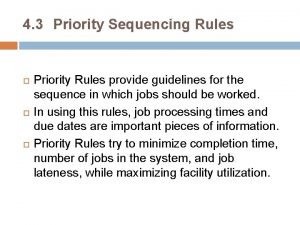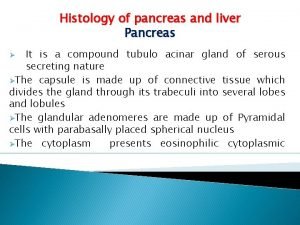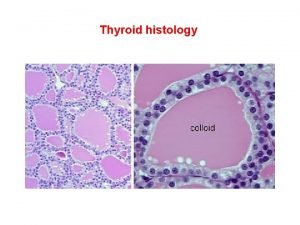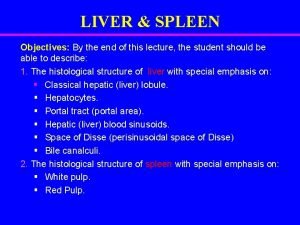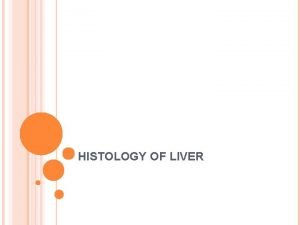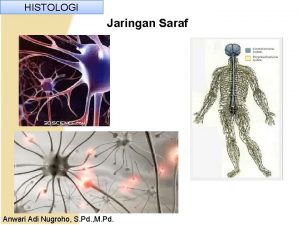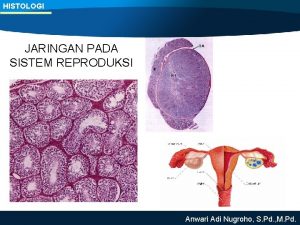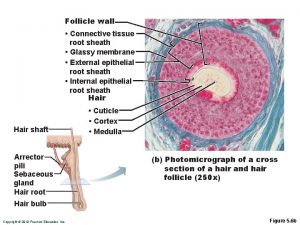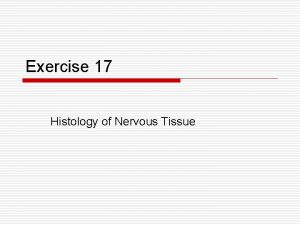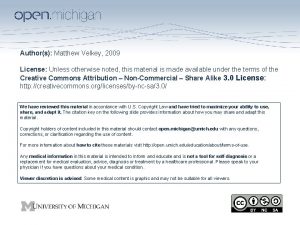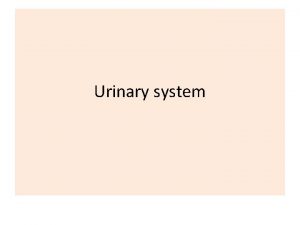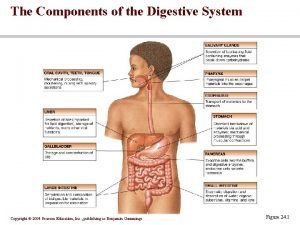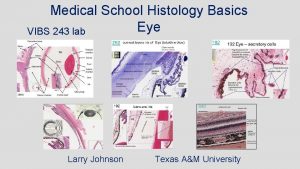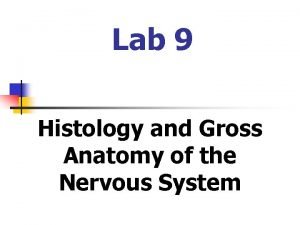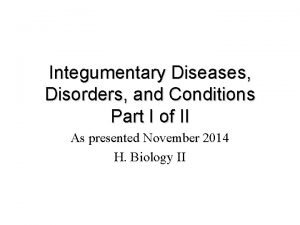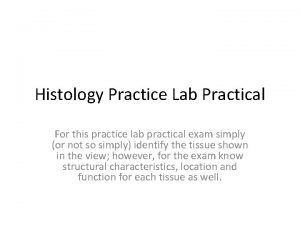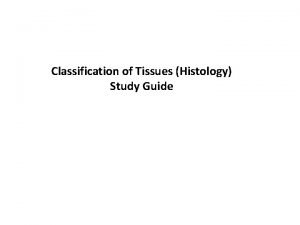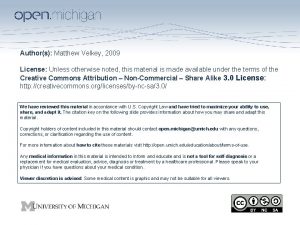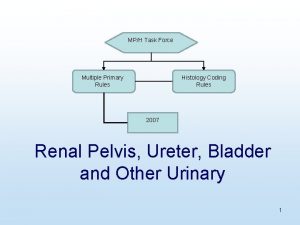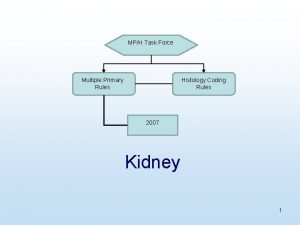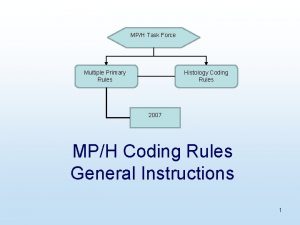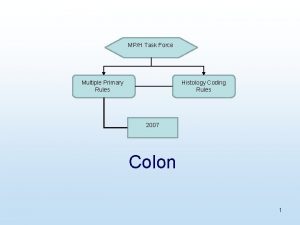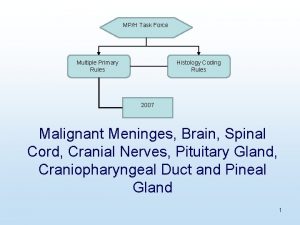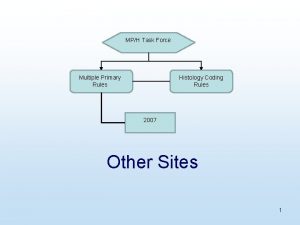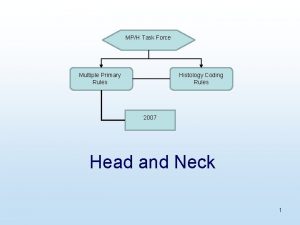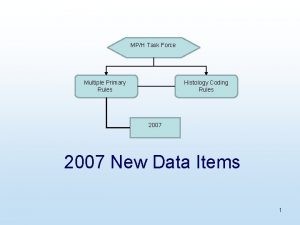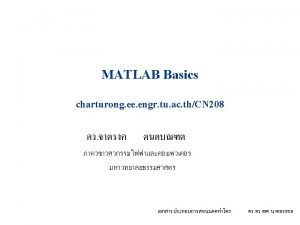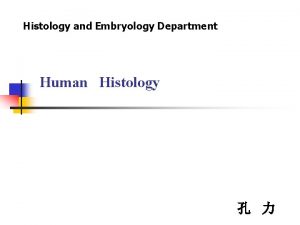1 Multiple Primary and Histology Rules 101 Format




























































































- Slides: 92

1

Multiple Primary and Histology Rules 101 Format of MP/H Materials

By the end of this presentation: • Basic understanding of MP/H rules • Pick a usage style • Understand the MP/H rules and how they work • Importance of reading • How the equivalent terms work 3

What we will cover: • General Information • Format of new rules • When and how to use the rules • What to expect from the General Rules 4

Important! • The 2007 multiple primary rules replace all previous multiple primary rules. 5

When? • The rules are effective for cases diagnosed January 1, 2007 and after. • Do not use these rules to abstract cases diagnosed prior to January 1, 2007. 6

Question ? ? ? “How do I code a non -analytic case that comes to our hospital after 1/1/07 with residual/metastatic cancer diagnosed in 2005? ” 7

Answer: Use the previous rules. 8

Style • The histology/multiple primary coding rules are available in three formats: flowchart text matrix • The rules are identical, only the formats differ. 9

Using the Rules • Notes and examples are included with some of the rules to highlight key points or to add clarity to the rules. – They are not exclusive. – They do not replace the rules. 10

How to Use the Rules 1. Read the General Instructions General Terms/Definitions Used for all cases EXCEPT: Hematopoietic Primaries Benign or borderline CNS DO NOT use for casefinding 11

How to Use the Rules 2. Read the site-specific equivalent or equal terms “Multicentric” = “Multifocal” or “Tumor” = “Mass” = “Lesion” = “Neoplasm” 12

How to Use the Rules 3. Used for: coding histology except for hematopoietic primaries (Do Not use for casefinding) 4. Use multiple primary rules before coding histology 5. Code histology for each primary 13

How to Use the Rules 6. Use site-specific rules for: • • Brain, malignant Breast Colon Head & Neck Kidney Lung Malignant Melanoma of Skin Renal Pelvis, ureter, bladder and other urinary 14

How to Use the Rules 7. Use “Other Sites” rules 8. Determine single vs. multiple tumors - Don’t count metastatic tumors - Multicentric/multifocal = Unknown if single or multiple tumors - Don’t count the foci - Only count tumors used to prepare abstract 15

How to Use the Rules 9. Each Section = Complete Set of Rules *Stay within module 10. Use the first rule that applies and 16

Pathology Reports • Code from the pathology report 1. from the most representative specimen examined 2. from the final diagnosis 17

Pathology Reports Note 1: A revised/amended diagnosis replaces the original final diagnosis. Code the histology from the revised/amended diagnosis. Note 2: The new rules limit the information to the final diagnosis. The old rules allowed coding from information in the microscopic description. 18

Pathology Reports If there is NO pathology report: 1. Cytology report 2. Documentation in the medical record that references pathology or cytology 19

Using the Rules The Multiple Primary Rules 3 independent modules 1. Unknown if Single or Multiple Tumors 2. Single tumor 3. Multiple tumors Rules in appropriate module 20

Using the Rules The Histology Coding Rules 2 independent modules 1. Single Tumor (one primary site) 2. Multiple Tumors abstracted as a single primary site Rules are hierarchical within each module 21

General Terms and Definitions • • • Bilateral Clinical Diagnosis Contiguous tumor Contralateral Different histology Different (multiple) primaries • Focal • Foci • Focus l Ipsilateral l Most representative specimen Multiple primaries Overlapping tumor Paired organ/site Single histology Single (one) primary Unilateral l l l 22

General Terms and Definitions (continued) Recurrence 1. The reappearance of disease that was thought to be cured or inactive (in remission). 2. A new occurrence of cancer arising from cells that have nothing to do with first cancer. A new occurrence of cancer 23

General Terms and Definitions (continued) Recurrence continued • Do not use a physician’s statement • Use the multiple primary rules as written – unless a pathologist compares the present tumor to the “original” tumor and states that this tumor is a recurrence of the previous primary. 24

Ambiguous Terms • • • Apparent(ly) Appears Comparable with Compatible with Consistent with Favor(s) • • • Most likely Presumed Probable Suspect(ed) Suspicious (for) Typical (of) 25

No “Negative” Lists • If it isn’t listed, don’t code it. v No “Do not use ambiguous terms” list v No “Terms that do not represent the majority of the tumor” list 26

Using the Rules • Notes and examples are included with some of the rules: 1. Highlight key points 2. Add Clarity They are NOT exclusive They DO NOT replace the rules 27

Learning Styles • Visual • Auditory • Text • Flowchart • Read/Write • Kinesthetic • Matrix 28

Example of Text Format Multiple Primary Rules M 2 A single tumor is always a single primary Note: The tumor may overlap onto or extend into adjacent/contiguous site or subsite. Histology Rules H 4 Code the invasive histologic type when a single tumor has invasive and in situ components. 29

Example of Matrix Format Multiple Primary Rules Rule Site Notes/Examples Primary M 2 Single Tumor The tumor may overlap onto or extend into adjacent/contiguous site or subsite. Single Histology Rules Rule Behavior H 4 Invasive and in situ Notes/Examples Code The invasive histologic type 30

Example of Flowchart Format Multiple Primary Rules 31

Example of Flowchart Format Histology Coding Rules 32

Warning! Do not use all three format of rules at the same time 33

Using the Rules First the Multiple Primary Rules 3 independent modules: Unknown if Single or Multiple Tumors Single Tumor Multiple Tumors Use rules in appropriate module 34

Using the Rules Second are the Histology Coding Rules Two independent modules: Single Tumor (one primary site) Multiple Tumors abstracted as a single primary site Rules are hierarchical within each module. 35

36

37

38

Other Miscellaneous • Other Sites – Similar to site-specific rules – Some site-specific rules included • • • Prostate Ovary Retinoblastoma Kaposi sarcoma Thyroid – Address remaining combination and mixed histology issues 39

Lung Multiple Primary Rules Unknown Number of Tumors Module

Unknown Number Of Tumors Note: Tumors not described as metastasis Rule M 1 When it is not possible to determine if there is a single tumor or multiple tumors, opt for a single tumor and abstract as a single primary. * Note 1: Use this rule only after all information sources have been exhausted 41

This is the end of instructions for Unknown Number of Tumors 42

Single Tumor Module

Single Tumor Note: Tumor not described as metastasis Rule M 2 A single tumor is always a single primary. * Note: The tumor may overlap onto or extend into adjacent/contiguous site or subsite. *Prepare one abstract. This is the end of instructions for Single Tumor. 44

This is the end of instructions for Single Tumors 45

Multiple Tumors Module

Multiple Tumors Multiple tumors may be a single or multiple primaries Note: Tumors not described as metastases Rule M 3 Tumors in sites with ICD-O 3 topography codes that are different at second (Cxxx) and/or third character (Cxxx) are multiple primaries. ** Note: This is a change in rules; tumors in the trachea (C 33) and in the lung (C 34) were a single primary in the previous rules. 47

Multiple Tumors Multiple tumors may be a single or multiple primaries Note: Tumors not described as metastases Rule M 4 At least one tumor that is non-small cell carcinoma (8046) and another tumor that is small cell carcinoma (8041 -8045) are multiple primaries. ** 48

Multiple Tumors Multiple tumors may be a single or multiple primaries Note: Tumors not described as metastases Rule M 5 A tumor that is adenocarcinoma with mixed subtypes (8255) and another that is bronchioloalveolar (8250 -8254) are multiple primaries. ** 49

Multiple Tumors Multiple tumors may be a single or multiple primaries Note: Tumors not described as metastases Rule M 6 A single tumor in each lung is multiple primaries. ** Note: When there is a single tumor in each lung, abstract as multiple primaries unless stated or proven to be metastatic. 50

Multiple Tumors Multiple tumors may be a single or multiple primaries Note: Tumors not described as metastases Rule M 7 Multiple tumors in both lungs with ICD-O-3 histology codes that are different at the first (xxxx), second (xxxx) or third (xxxx) number are multiple primaries. ** 51

Multiple Tumors Multiple tumors may be a single or multiple primaries Note: Tumors not described as metastases Rule M 8 Tumors diagnosed more than three (3) years apart are multiple primaries. ** 52

Multiple Tumors Multiple tumors may be a single or multiple primaries Note: Tumors not described as metastases Rule M 9 An invasive tumor following an in situ tumor more than 60 days after diagnosis is a multiple primary. ** Note 1: The purpose of this rule is to ensure that the case is counted as an incident (invasive) when incidence data are analyzed. Note 2: Abstract as multiple primaries even if the medical record/physician states that it is recurrence or progression of disease. 53

Multiple Tumors Multiple tumors may be a single or multiple primaries Note: Tumors not described as metastases Rule M 10 Tumors with non-small cell carcinoma, NOS (8046) and a more specific non-small cell carcinoma type (Chart 1) are a single primary. * 54

Multiple Tumors Multiple tumors may be a single or multiple primaries Note: Tumors not described as metastases Rule M 11 Tumors with ICD-O-3 histology codes that are different at the first (xxxx), second (xxxx) or third (xxxx) number are multiple primaries** Note: Adenocarcinoma in one tumor and squamous cell carcinoma in another tumor are multiple primaries. 55

Multiple Tumors Multiple tumors may be a single or multiple primaries Note: Tumors not described as metastases Rule M 12 Tumors that do not meet any of the above criteria are a single primary. * Note 1: When an invasive tumor follows an in situ tumor within 60 days, abstract as a single primary. Note 2: All cases covered by this rule are the same histology. 56

Multiple Tumors Multiple tumors may be a single or multiple primaries Note: Tumors not described as metastases Footnotes: * Prepare one abstract. Use the histology coding rules to assign the appropriate histology code. **Prepare two or more abstracts. Use the histology coding rules to assign the appropriate histology code to each abstract. 57

This is the end of instructions for Multiple Tumors 58

Lung Histology Rules Excludes lymphoma and leukemia M 9590 -9989 and Kaposi Sarcoma M 9140 59

Lung Histology Rules Single Tumor Module

Single Tumor Rule H 1 Code histology documented by physician when there is no pathology/cytology specimen or pathology/cytology report is not available. 61

Single Tumor Rule H 1 continued Note 1: Priority of documents • Documentation referring to pathologic/cytologic findings • Physician’s reference to type of cancer in medical record • CT, PET, or MRI scans • Chest x-rays 62

Single Tumor Rule H 1 continued Note 2: Code the specific histology when documented Note 3: Code histology to 8000 or 8010 as stated by the physician when nothing more specific is documented 63

Single Tumor Rule H 2 Code histology from a metastatic site when there is no pathology/cytology specimen from primary site. Note: Code behavior /3 64

Single Tumor Rule H 3 Code histology when only one histologic type is identified. Note: Do not code terms that do not appear in the histology description. Ex 1: Do not code squamous cell carcinoma non-keratinizing unless the words “nonkeratinizing” actually appear in the diagnosis. Ex 2: Do not code bronchioalveolar nonmucinous unless the words “nonmucinous” actually appear in the diagnosis. 65

Single Tumor Rule H 4 Code invasive histologic type when a single tumor has invasive and in situ components 66

Single Tumor Rule H 5 Code most specific term using Chart 1 when multiple histologies within same branch. Examples of histologies within the same branch are: • Cancer/malignant neoplasm, NOS (8000) and a more specific histology or • Carcinoma, NOS (8010) and a more specific carcinoma or • Adenocarcinoma, NOS (8140) and a more specific adenocarcinoma or • Sarcoma, NOS (8800) and a more specific sarcoma 67

Single Tumor Rule H 5 continued Note: The specific histology may be identified as type, subtype, predominantly, with features of, major, or with ____differentiation Ex 1: Adenocarcinoma, predominantly mucinous. Code 8480 (mucinous adenocarcinoma). Ex 2: Non-small cell carcinoma, papillary squamous cell. Code 8052 (papillary squamous cell carcinoma). 68

Chart 1 69

Single Tumor Rule H 6 Code appropriate combination/mixed code (Table 1) when there are multiple specific histologies or when there is a nonspecific with multiple specific histologies 70

Single Tumor Rule H 6 continued Note: The specific histologies may be identified as type, subtype, predominantly, with features of, major, or with ____differentiation. Ex 1 (multiple specific histologies): Solid and papillary adenocarcinoma. Code 8255 (adenocarcinoma with mixed subtypes). Ex 2 (multiple specific histologies): Combined small cell and squamous cell carcinoma. Code 8045 (combined small cell carcinoma). Ex 3 (non-specific with multiple specific histologies): Adenocarcinoma with papillary and clear cell features. Code 8255 (adenocarcinoma with mixed subtypes). 71

72

Single Tumor Rule H 7 Code the histology with the numerically higher ICDO-3 code. 73

This is the end of instructions for Single Tumor 74

Lung Histology Rules Multiple Tumor Module

Multiple Tumors Abstracted as a Single Primary Rule H 8 Code histology documented by physician when there is no pathology/cytology specimen/report available 76

Multiple Tumors Abstracted as a Single Primary Rule H 8 continued Note 1: Priority of documents • Documentation that refers to pathologic/cytologic findings • Physician’s reference to type of cancer in medical record • CT, PET, or MRI scans • Chest x-rays 77

Multiple Tumors Abstracted as a Single Primary Rule H 8 continued Note 2: Code the specific histology when documented Note 3: Code histology to 8000 or 8010 as stated by the physician when nothing more specific is documented 78

Multiple Tumors Abstracted as a Single Primary Rule H 9 Code the histology from a metastatic site when there is no pathology/cytology specimen from primary site Note: Code behavior /3 79

Multiple Tumors Abstracted as a Single Primary Rule H 10 Code the histology when only one histologic type is identified. Note: Do not code terms that do not appear in the histology description. Ex 1: Do not code squamous cell carcinoma nonkeratinizing unless the words “non-keratinizing” actually appear in the diagnosis. Ex 2: Do not code bronchioalveolar non-mucinous unless the words “non-mucinous” actually appear in the diagnosis. 80

Multiple Tumors Abstracted as a Single Primary Rule H 11 Code the histology of the most invasive tumor. Note 1: This rule should only be used when the first three numbers of histology are identical (This is a single primary). Note 2: See Lung Equivalent Terms, Definitions, Charts, Tables, Illustrations for definition of most invasive. 81

This is the end of instructions for Multiple Tumors 82

83

Chart 2: Most Common Lung Histology Groups Chart Instructions: Use this chart to identify the most common group terms and histology types. Note: This chart is based on the WHO Classification of Tumors for tumors of the lung. The chart is not a complete listing of histologies that may occur in the lung. 84

Table 1: Combination/Mixed Codes for Lung Histologies Table Instructions: Use this table to select combination/mixed histology codes. Compare the terms in the diagnosis to the terms in columns 1 and 2. If the terms match, abstract the case using the ICD-O-3 histology code in column 4. Use the combination/mixed codes listed in this table only when the histologies in the tumor match the histologies listed below. 85

Table 1 continued Use the combination/mixed codes for a single tumor when all histologies are present in a single tumor. Note: This table is not a complete listing of histologies that may occur in the lung 86

87

Multiple Primaries and Histology Coding Rules–Lung Cases Case 1 Lung bx: Poorly differentiated non-small cell lung carcinoma (mixed large cell undifferentiated and adenocarcinoma). (Single primary) Histology code: 8140 Histology rule: H 7 88

Multiple Primaries and Histology Coding Rules–Lung Cases Case 2 Lung with moderately differentiated adenocarcinoma, mucin secreting cells, mixed acinar, papillary, and bronchioalveolar features. (Single primary) Histology code: 8255 Histology rule: H 6 89

Multiple Primaries and Histology Coding Rules–Lung Cases Case 3 Poorly differentiated carcinoma, non-small cell type. (Single primary) Histology code: 8046 Histology rule: H 5 90

Multiple Primaries and Histology Coding Rules–Lung Cases Case 4 Lung, right upper lobectomy: 2 nodules of carcinoma with mucin production (c/w pulmonary primary), one nodule has bronchoalveolar features, the other shows focal squamous differentiation. (2 primaries) #1 #2 Histology code: 8250 8070 Histology rule: H 5 91

MP/H Task Force 92
 Multiple baseline vs multiple probe design
Multiple baseline vs multiple probe design Multiple instruction multiple data
Multiple instruction multiple data Stimulus-based questions examples
Stimulus-based questions examples Paraphrased quote examples
Paraphrased quote examples Apa citation for three authors
Apa citation for three authors Quoting multiple authors apa
Quoting multiple authors apa Magenta cyan and yellow are the ____ color. *
Magenta cyan and yellow are the ____ color. * Calculation priority sequence
Calculation priority sequence Karangan perbincangan
Karangan perbincangan Truth table method
Truth table method Kelvin rodolfo
Kelvin rodolfo Histology of vein and artery
Histology of vein and artery Esophageal stomach junction histology
Esophageal stomach junction histology Parotid nest
Parotid nest Parathyroid gland image
Parathyroid gland image Histology of liver and pancreas
Histology of liver and pancreas Chapter 8 oral embryology and histology
Chapter 8 oral embryology and histology Anatomy and histology of liver
Anatomy and histology of liver Prostate function
Prostate function Lingual papilla
Lingual papilla Atireosi
Atireosi Oogenesis process
Oogenesis process Oogenesis diagram
Oogenesis diagram Adventitia vs serosa
Adventitia vs serosa Pyloric glands histology
Pyloric glands histology Oligodendrocyte histology
Oligodendrocyte histology Pemphigus vulgaris hypersensitivity
Pemphigus vulgaris hypersensitivity Meiosis
Meiosis Interalveolar septa
Interalveolar septa Paneth cells
Paneth cells Disse space liver
Disse space liver Liver lobules
Liver lobules Duodenum histology
Duodenum histology Nodus lymphaticus histology
Nodus lymphaticus histology Tongue histology
Tongue histology Gmail
Gmail Pharynx histology
Pharynx histology Histology of human alimentary canal
Histology of human alimentary canal Lateral white column
Lateral white column Holocrine gland
Holocrine gland Neuron histology
Neuron histology Cns histology ppt
Cns histology ppt Acinus liver
Acinus liver Sobia anal
Sobia anal Uterus layers histology
Uterus layers histology Thick stroma in ovary
Thick stroma in ovary Digestive tract histology
Digestive tract histology Mcq cartilage
Mcq cartilage Agranular and granular leukocytes
Agranular and granular leukocytes Minute colorless anucleate corpuscles found in the blood
Minute colorless anucleate corpuscles found in the blood Synapse histology
Synapse histology Histologi penis
Histologi penis Hair root sheath
Hair root sheath Dilator pupillae histology
Dilator pupillae histology Sheep brain labeled
Sheep brain labeled Quervain thyroiditis
Quervain thyroiditis Reduced enamel epithelium
Reduced enamel epithelium Hijama for thyroid
Hijama for thyroid Blood cells
Blood cells Connective tissue histology quiz
Connective tissue histology quiz Gastric gland
Gastric gland Digestive system histology
Digestive system histology Uterus avf position
Uterus avf position Mapa ocular
Mapa ocular Lamina propria papillae
Lamina propria papillae Histology hair
Histology hair Renal system
Renal system Muscularis mucosae
Muscularis mucosae Intestine histology
Intestine histology Intestine
Intestine Tissue processing steps
Tissue processing steps Vibs 243
Vibs 243 Vibs histology
Vibs histology Neuron histology
Neuron histology Acne vulgaris histology
Acne vulgaris histology Zone of decomposed dentin
Zone of decomposed dentin Pseudostratified columnar epithelium location
Pseudostratified columnar epithelium location Muscle histology review
Muscle histology review Histology lab practical
Histology lab practical Function of macula densa
Function of macula densa Tunic
Tunic Git histology
Git histology Histology jobs
Histology jobs Smooth muscle in veins
Smooth muscle in veins Filiform papillae histology
Filiform papillae histology Lymphatic capillaries histology
Lymphatic capillaries histology Epithelial tissue histology pogil
Epithelial tissue histology pogil Large artery histology
Large artery histology Large artery histology
Large artery histology Spleen histology slide labeled
Spleen histology slide labeled Canalis musculotubularis
Canalis musculotubularis Respiratory system meaning
Respiratory system meaning Collagen location in body
Collagen location in body







